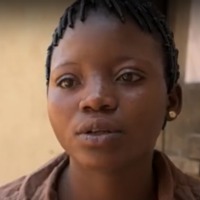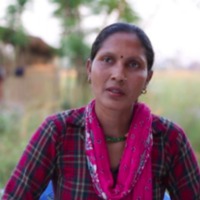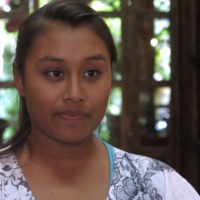Collection
Theme
- Domestic slavery
- Children
- Sexual exploitation
- Armed Conflict
- Forced marriage
- Trafficking
- Forced labour
- Debt bondage
- Emancipation
Country
- Indonesia (trafficked from)
- Hong Kong (slavery location)
- Saudi Arabia (slavery location)
- United States (slavery location)
- Philippines (trafficked from) 20 More
Date
- 2013 (Narrative Date)
- 2006 (Narrative date)
- 2014 (Narrative date)
- 2015 (Narrative date)
- 2020 (Narrative date) 20 More
Type

Rachida
Forced child labour remains a source of concern in Nigeria, according the International Labor Organization, the number of children working under the age of 14 in Nigeria is estimated at 15 million. These jobs include street vending, begging, car washing and shoe shining, while a large number of…

Esther A
Forced child labour remains a source of concern in Nigeria, according the International Labor Organization, the number of children working under the age of 14 in Nigeria is estimated at 15 million. These jobs include street vending, begging, car washing and shoe shining, while a large number of…

Aicha
It is estimated that there are around 875, 000 people living in conditions of modern slavery in Nigeria. It remains a source, transit and destination country for women and children trafficked for the purposes of forced labour and commercial sexual exploitation. Within Nigeria, women and girls are…

Vatsana B
It is estimated that 425,500 people are enslaved in Thailand, with the many subjected to forced labour. Women overseas-workers most often find employment in private households or service sectors, often finding themselves having to pay significant fees for the migration and recruitment process.…

Sian Men
The Global Slavery Index 2018 estimates that on any given day in 2016 there were over 3.8 million people living in conditions of modern slavery in China. Included in the types of slavery prevalent in China is forced labour, with China's unprecedented rise to the world's second largest economy and…

Sophia
There are an estimated 336,000 people living in modern slavery in Tanzania (GSI 2018). Internal trafficking is more prevalent than transnational trafficking and characteristically facilitated by victims’ family members, friends, or intermediaries offering assistance with education or securing…

Manisha
The UK National Crime Agency estimates 3,309 potential victims of human trafficking came into contact with the State or an NGO in 2014. The latest government statistics derived from the UK National Referral Mechanism in 2014 reveal 2,340 potential victims of trafficking from 96 countries of origin,…

Rohiti
Significant numbers of domestic workers are brought to the UK each year, including an unknown number who travel into and out of the UK with the families they are working for in other countries. In the UK, migrant domestic workers are currently tied to their employer by the immigration rules,…

Sara A.
Like hundreds of others, Sara came to the UK to work for a wealthy family as a domestic worker. Instead she found herself trapped in the nightmare of domestic slavery. Hundreds of domestic workers from overseas find themselves in the UK working for employers that abuse them, afford them little or no…

Sara
The UK government implemented provisions of the Modern Slavery Act allowing foreign domestic workers who are trafficking victims to change employers during the six-month period for which they are admitted. Effective April 2016, any domestic worker determined to be a victim is allowed to remain in…

Seema A.
Men and women migrate from South and Southeast Asia, Egypt, the Middle East, and increasingly throughout Africa to work in Kuwait, predominantly in the domestic service, construction, hospitality, and sanitation sectors. Several labor-sending countries, including India, Nepal, Indonesia, Ethiopia,…

Sophie
At the age of 13, Sophie was forced to work as a domestic slave, deprived of sleep and beaten. She endured months of abuse at the hands of relatives who had tricked her parents. She suffered for over a year before being rescued. Sophie was helped through the recovery process by HAART Kenya. There…

Afsana
It is estimated that there are over four million domestic workers in India. The domestic sector is informal and unregulated, obscured in private homes, and workers are not recognised as such but rather as ‘informal help’. Their wages are, on average, only a third of those in other sectors, they…

Carla A.
It is estimated that of the 400 000 enslaved in the Philippines, the majority are in forced labour. Recent surveys suggest that one in every two Filipino women are working abroad in unskilled and domestic work, some of the highest risk industries for modern slavery. High population growth combined…

Eka
There are a reported 9,200 enslaved in Singapore with the large number of foreign workers being the most vulnerable to human trafficking and enslavement. Many are brought to the country after being deceived by recruiters in their home countries with the promise of employment only to become victims…

Khanh
Foreign workers constitute more than 20 percent of the Malaysian workforce and typically migrate voluntarily—often illegally—to Malaysia from Bangladesh, India, Nepal, Burma, Indonesia, the Philippines, and other Southeast Asian countries, mostly in pursuit of better economic opportunities. Some…

Maria E
Mexico has one of the largest child labour forces in Latin America with 3.6 million children between the ages of 5 and 17 currently employed in some way. This has made children one of the most vulnerable groups of people subjected to labour exploitation in the country. 42.5 percent of children…

Posvak
Cambodia remains a source country for the exploitation of men, women and children in all forms of modern slavery including forced labour, debt bondage and forced marriage. Cambodian women eager to escape impoverished lives in rural villages are often deceived in to forced work on farms, as domestic…

Siti
Foreign workers constitute more than 20 percent of the Malaysian workforce and typically migrate voluntarily—often illegally—to Malaysia from Bangladesh, India, Nepal, Burma, Indonesia, the Philippines, and other Southeast Asian countries, mostly in pursuit of better economic opportunities. Some…

Putri
Putri is an Indonesian woman who was enslaved in Malaysia as a domestic servant for multiple employers. Foreign workers constitute more than 20 percent of the Malaysian workforce and typically migrate voluntarily—often illegally—to Malaysia from Bangladesh, India, Nepal, Burma, Indonesia, the…